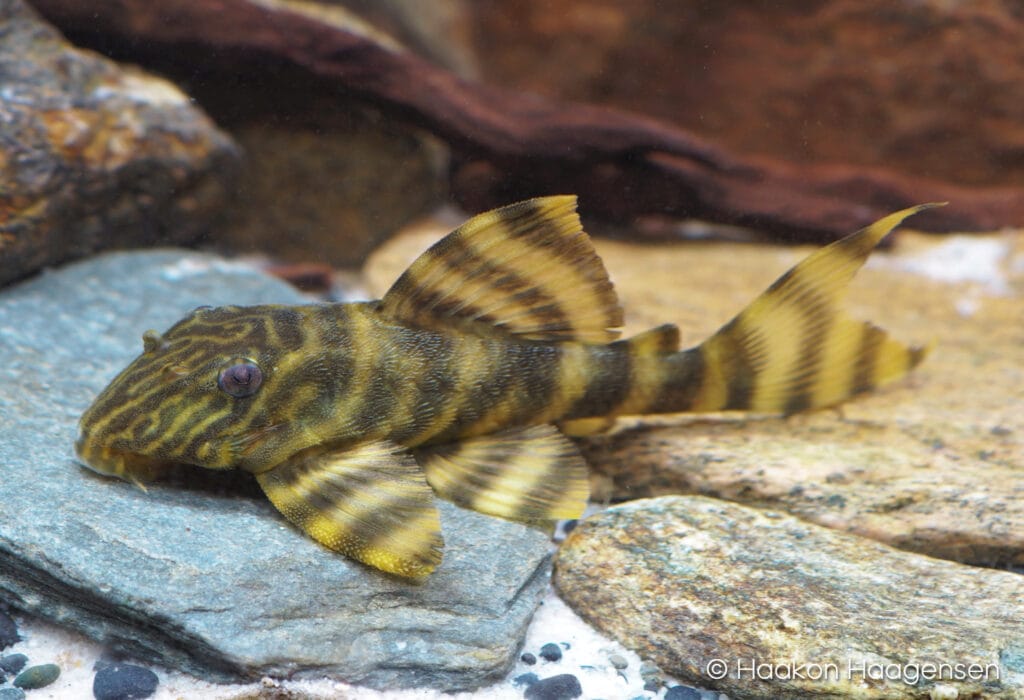
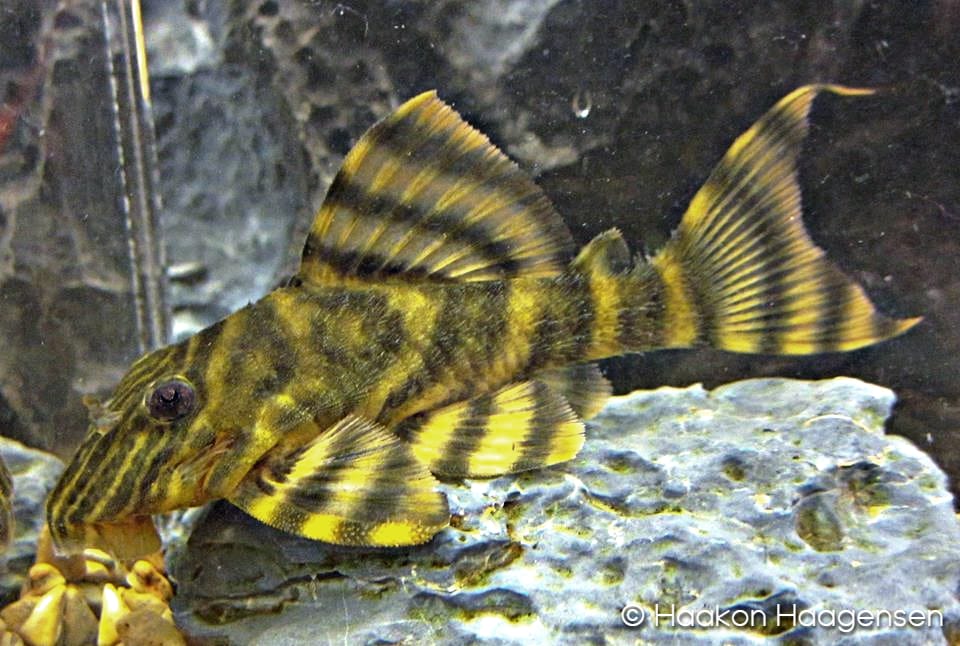
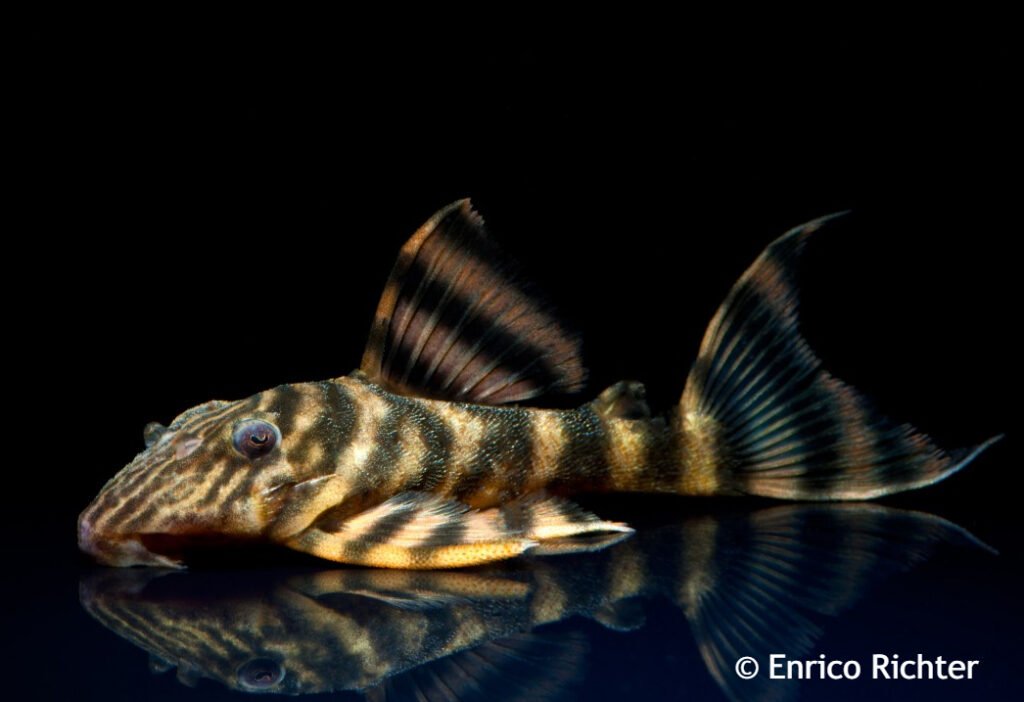

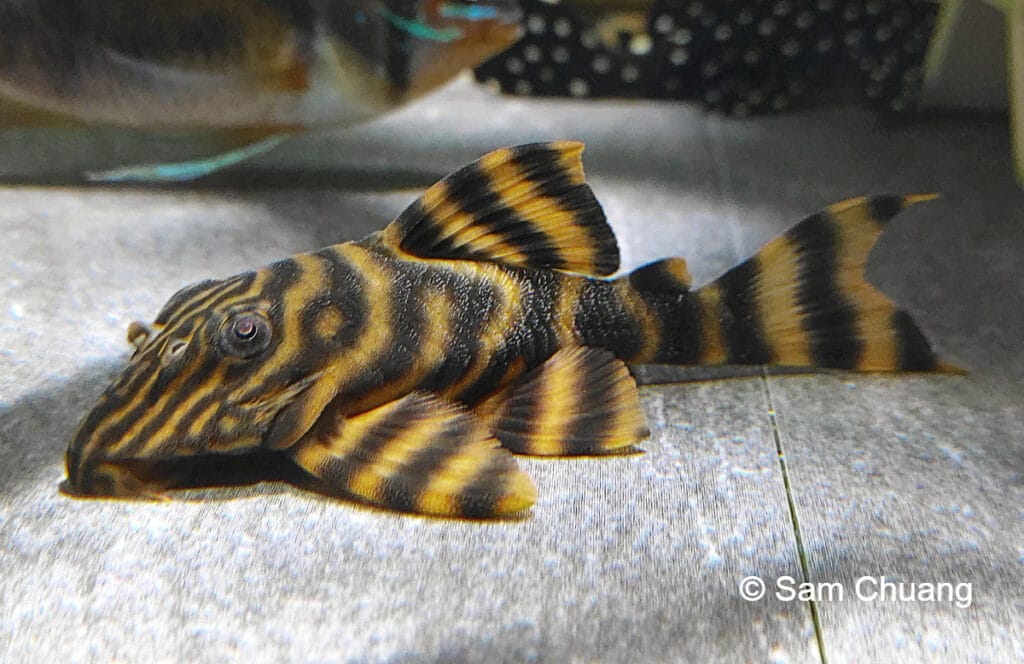
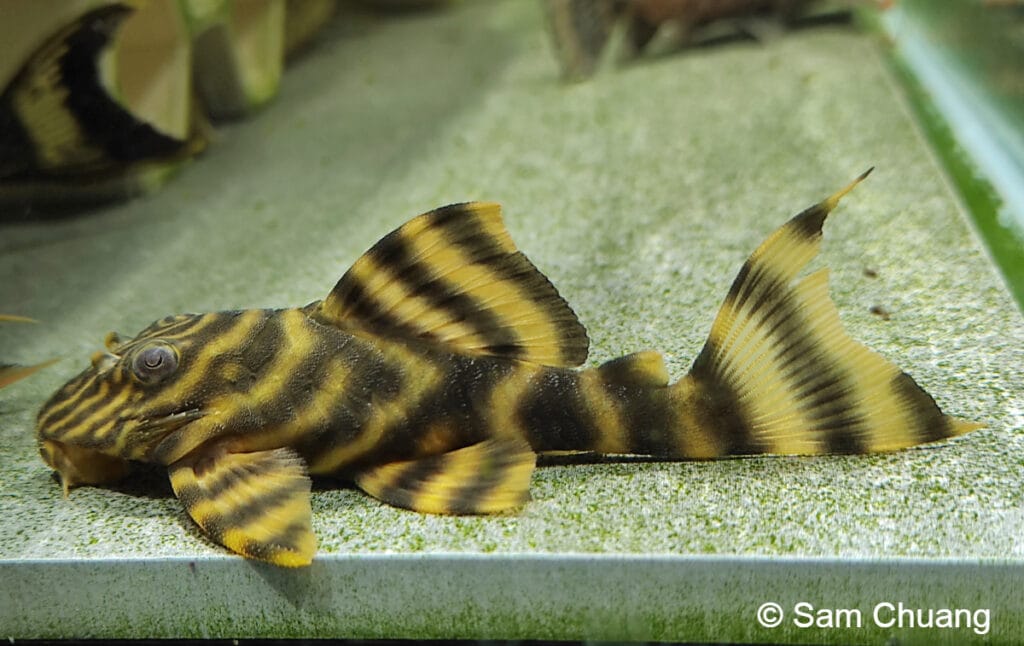
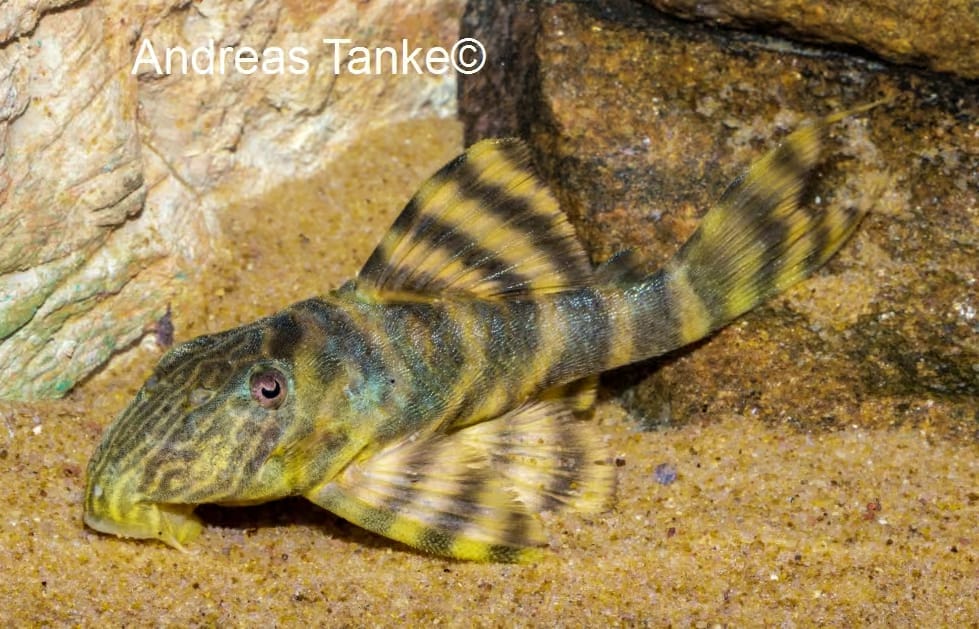
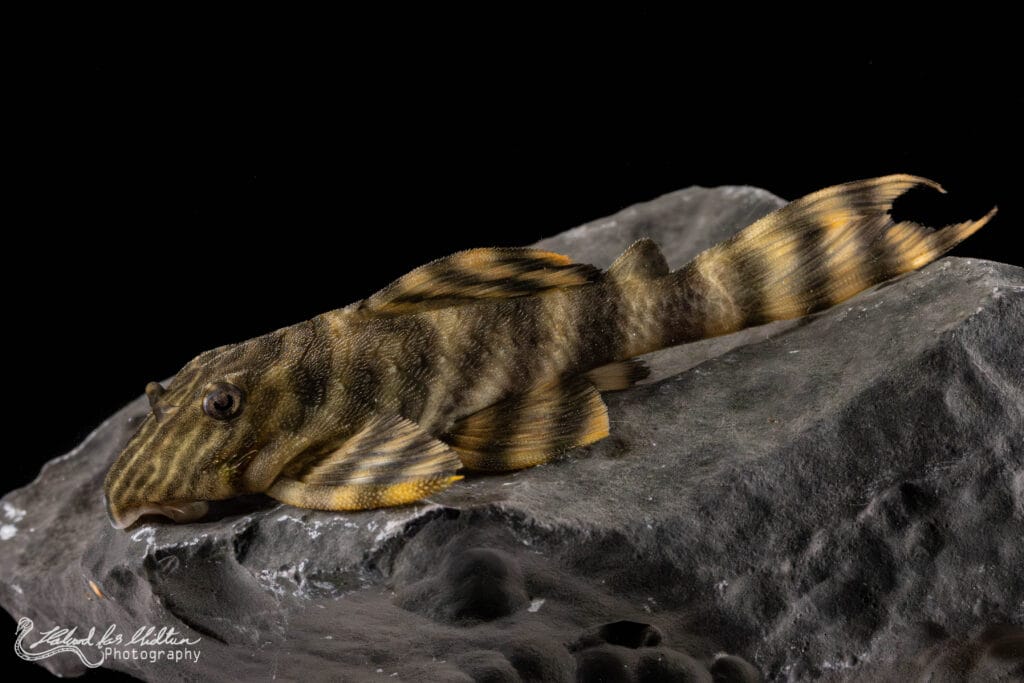
Panaqolus tankei is one of a few types of Panaqolus allowed for export from Brazil. It occurs naturally in the lower section of the Rio Xingu, where it’s found primarily on wood. This section of the river is not under any immediate threat from the damming further upstream. Among the many types of similar looking Panaqolus from Brazil, P.tankei is nowadays the most commonly imported along with P.sp. L169 from Rio Demini in the Rio Negro system and P.sp. L2 from Rio Tocantins. Compared to these, L398 has a slightly more yellow body. It first entered our hobby in 2005, and was scientifically described a decade later. The name is a dedication to German Panaqolus expert Andreas Tanke.
Facts:
Name: Panaqolus tankei (Cramer & Sousa, 2016)
Trade names: L398
Origin: Rio Xingu, Brazil.
Maximum size: 13 cm / 5”
Panaqolus species are great aquarium fish. They need shelter in the form of wood and rocks, and if they feel safe, they will venture out in search of food even during daytime. They prefer a vegetarian diet, and of course wood is essential for their digestion. Some crustaceans and insect larvae can be added to their diet, but a diet consisting of too much protein and too little vegetarian food can cause trouble. They are peaceful Plecos, but males can be quarrelsome over territories and food. Panaqolus species are slightly more challenging to breed than many other popular Plecos, but it’s usually all a matter of time and patience. When they do, they breed in typical Loricariidae manner with the male guarding the brood in his cave. Usually, male Panaqolus develop quite impressive odontodal growth on their flanks and on their fins.
More info:
